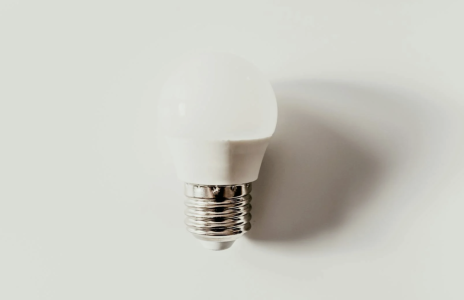Could you qualify? New energy bill credit of up to $1,100 arrives this October
By
Veronica E.
- Replies 0
As cooler weather approaches and heating costs begin to rise, many Americans are looking for ways to stretch their budgets this fall.
For some households, relief is on the way in the form of a substantial credit—up to $1,100—applied directly to their energy bills.
The assistance is part of a long-running federal program that helps income-eligible residents cover the cost of heating, cooling, and even emergency repairs.
While the program is national, details vary by state, and North Dakota is among those offering robust support this season.
Whether you're already enrolled or considering applying, here’s what to know about how the program works, who qualifies, and when to expect your payment.

The credit comes from the Low Income Home Energy Assistance Program (LIHEAP), a federally funded initiative administered by the US Department of Health and Human Services.
States are responsible for running their own programs, which means eligibility rules and benefit amounts can vary depending on where you live.
The goal of LIHEAP is to help lower-income households afford the cost of heating and cooling their homes.
With rising energy prices and more extreme weather events, the program has become even more vital.
Last year, more than 15,000 households in North Dakota alone received assistance, and the state expects to reach even more families this season.
One of the program’s biggest advantages is its ease of use.
If you’re already approved for LIHEAP, there’s no need to reapply each year unless your household circumstances change.
Payments are typically sent directly to your utility provider or fuel supplier as a lump-sum credit—so you won’t see a check in the mail, but you will see a reduction on your bill.
LIHEAP support may help cover a variety of energy-related needs, such as:
In North Dakota, these are the key figures for the 2025–2026 heating season:
The exact amount your household receives depends on your income, household size, and specific energy needs.
If you experience a sudden emergency—such as your heat going out during a cold snap—you may be eligible for additional crisis support, though the cap remains at $500.
Eligibility is based primarily on your income and the number of people in your household.
To qualify in North Dakota, your household income must be at or below 60% of the state’s median income. Below are the income limits for the 2025–2026 season:
Importantly, both homeowners and renters can qualify for LIHEAP, so you don’t need to own your home to receive assistance.
If you’re already enrolled in LIHEAP, your payment will be processed automatically. For those applying for the first time, here’s how to begin:
The heating assistance season runs from October 1 through May 31, though applications for cooling, weatherization, and emergency needs are accepted year-round.
In addition to LIHEAP, North Dakota offers other programs that may help reduce energy expenses:
Simple DIY solutions can also help.
For instance, inexpensive items like weatherstripping or draft stoppers—sometimes available for just a few dollars at major retailers—can reduce heating bills significantly over the winter.
With higher-than-usual energy costs and more unpredictable weather across the country, programs like LIHEAP are increasingly important for households on fixed or limited incomes.
They can make the difference between staying warm and cutting back on other essentials.
If you think you might qualify—or know someone who could—be sure to apply or share this information.
Getting the help you need now could make all the difference later in the season.
Let us know if you’ve received help through LIHEAP or have a question about how to apply.
Staying warm shouldn’t be a luxury—and this fall, help may be just around the corner.
Read next:

Have you ever used LIHEAP or another energy assistance program? What tips do you have for keeping your home warm without breaking the bank? We’d love to hear your thoughts and stories in the comments—your advice could help someone else this winter.
For some households, relief is on the way in the form of a substantial credit—up to $1,100—applied directly to their energy bills.
The assistance is part of a long-running federal program that helps income-eligible residents cover the cost of heating, cooling, and even emergency repairs.
While the program is national, details vary by state, and North Dakota is among those offering robust support this season.
Whether you're already enrolled or considering applying, here’s what to know about how the program works, who qualifies, and when to expect your payment.

A cozy home in the fall season, where rising energy costs can add up quickly. Image source: Pexels / Julia Filirovska.
A look at the $1,100 energy bill credit
The credit comes from the Low Income Home Energy Assistance Program (LIHEAP), a federally funded initiative administered by the US Department of Health and Human Services.
States are responsible for running their own programs, which means eligibility rules and benefit amounts can vary depending on where you live.
The goal of LIHEAP is to help lower-income households afford the cost of heating and cooling their homes.
With rising energy prices and more extreme weather events, the program has become even more vital.
Last year, more than 15,000 households in North Dakota alone received assistance, and the state expects to reach even more families this season.
Also read: Help with rising energy bills: See if your state offers relief
How payments are delivered
One of the program’s biggest advantages is its ease of use.
If you’re already approved for LIHEAP, there’s no need to reapply each year unless your household circumstances change.
Payments are typically sent directly to your utility provider or fuel supplier as a lump-sum credit—so you won’t see a check in the mail, but you will see a reduction on your bill.
LIHEAP support may help cover a variety of energy-related needs, such as:
- Electricity, gas, propane, coal, or wood
- Weatherization to improve home energy efficiency
- Furnace or chimney cleaning
- Emergency energy needs, like broken heating systems
Also read: Struggling with energy bills? This new support for pensioners could change everything!
Benefit amounts for 2025
In North Dakota, these are the key figures for the 2025–2026 heating season:
- Heating assistance: $6 minimum, up to $1,100 maximum
- Cooling assistance: $1 minimum, up to $1,000 maximum
- Crisis assistance: Up to $500 per qualifying event
The exact amount your household receives depends on your income, household size, and specific energy needs.
If you experience a sudden emergency—such as your heat going out during a cold snap—you may be eligible for additional crisis support, though the cap remains at $500.
Also read: Get Help Paying Your Energy Bills: Government Aid for Social Security Recipients!
Who qualifies for help?
Eligibility is based primarily on your income and the number of people in your household.
To qualify in North Dakota, your household income must be at or below 60% of the state’s median income. Below are the income limits for the 2025–2026 season:
- 1-person household: $40,530 or less
- 2-person household: $53,010 or less
- 3-person household: $65,478 or less
- 4-person household: $77,958 or less
- 5-person household: $90,426 or less
Importantly, both homeowners and renters can qualify for LIHEAP, so you don’t need to own your home to receive assistance.
Also read: Are you missing out? 15 legitimate ways to claim free money from the government
How to apply and when to expect help
If you’re already enrolled in LIHEAP, your payment will be processed automatically. For those applying for the first time, here’s how to begin:
- Apply online or by mail through the North Dakota Health and Human Services website.
- Drop off an application in person at your local Human Service Zone office.
The heating assistance season runs from October 1 through May 31, though applications for cooling, weatherization, and emergency needs are accepted year-round.
Also read: Essential financial resources for seniors: 25 programs that can help
Additional support options
In addition to LIHEAP, North Dakota offers other programs that may help reduce energy expenses:
- Cooling equipment vouchers: Up to $300 for window AC units or fans, available through local social services offices.
- Emergency charitable funds: Limited funding may be available in urgent situations where other aid has run out.
Simple DIY solutions can also help.
For instance, inexpensive items like weatherstripping or draft stoppers—sometimes available for just a few dollars at major retailers—can reduce heating bills significantly over the winter.
Also read: Five free or low-cost retirement perks you may be overlooking
Why this support matters
With higher-than-usual energy costs and more unpredictable weather across the country, programs like LIHEAP are increasingly important for households on fixed or limited incomes.
They can make the difference between staying warm and cutting back on other essentials.
If you think you might qualify—or know someone who could—be sure to apply or share this information.
Getting the help you need now could make all the difference later in the season.
Let us know if you’ve received help through LIHEAP or have a question about how to apply.
Staying warm shouldn’t be a luxury—and this fall, help may be just around the corner.
Read next:
- Are you missing out? Discover 7 free and discounted programs for Social Security recipients
- Energy bills near $800 for some households—what’s going on in this state?
- Struggling with small Social Security checks? Boost your monthly income now!
Key Takeaways
- North Dakota residents can receive up to $1,100 in energy bill credits this heating season through LIHEAP, with payments applied directly to utility providers.
- Eligibility is based on income and household size, and both renters and homeowners may qualify if income is at or below 60% of the state median.
- Additional programs offer up to $300 for cooling equipment and limited emergency aid, while energy-saving items like draft stoppers can also cut costs.
- LIHEAP applications for heating are open from October 1 to May 31, but crisis and cooling support can be requested year-round.
Have you ever used LIHEAP or another energy assistance program? What tips do you have for keeping your home warm without breaking the bank? We’d love to hear your thoughts and stories in the comments—your advice could help someone else this winter.






